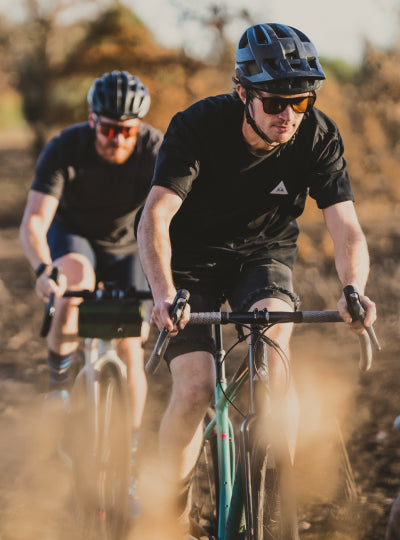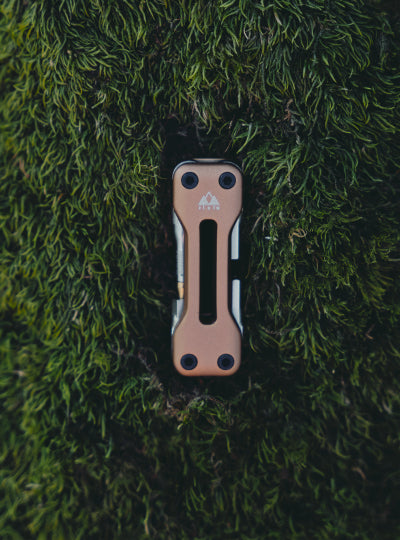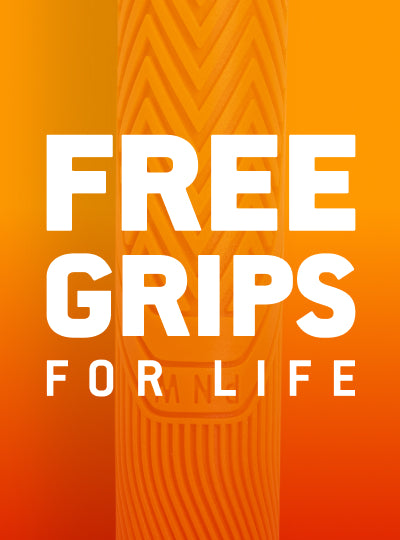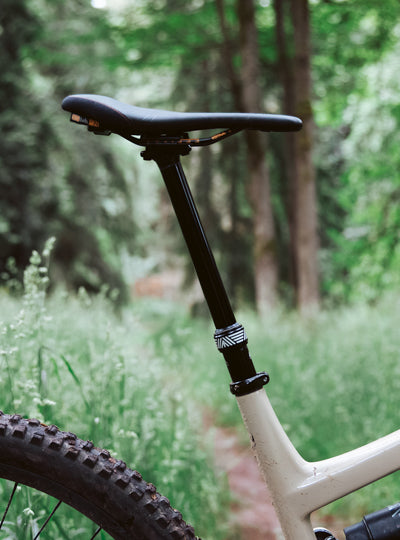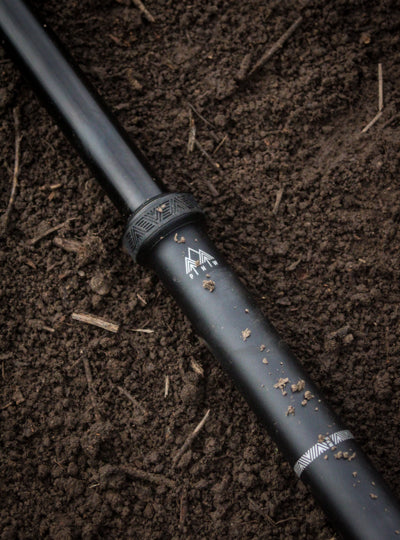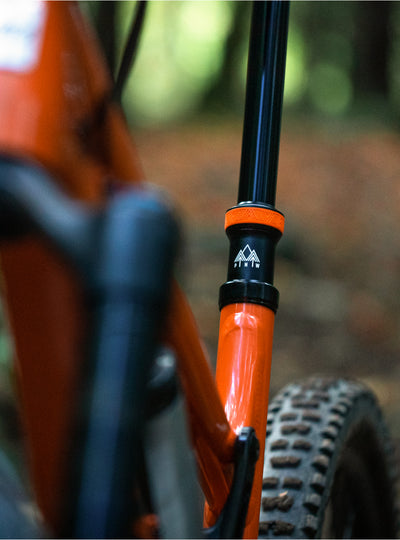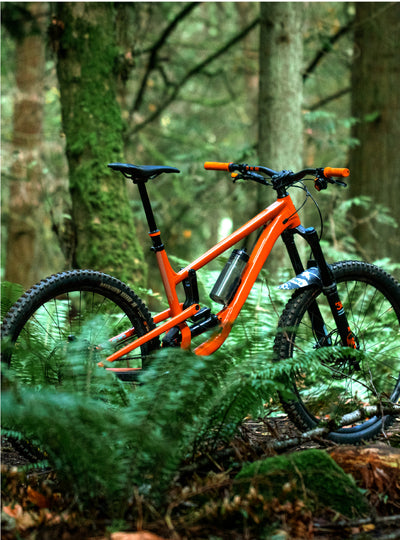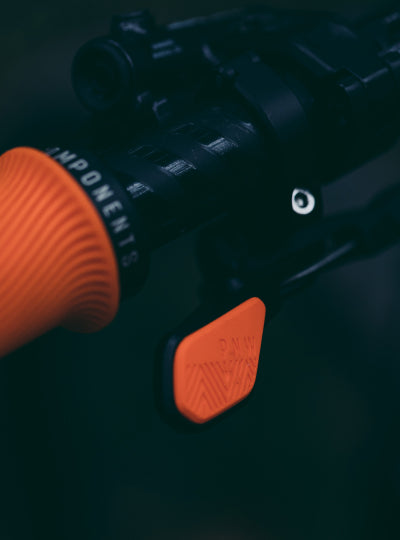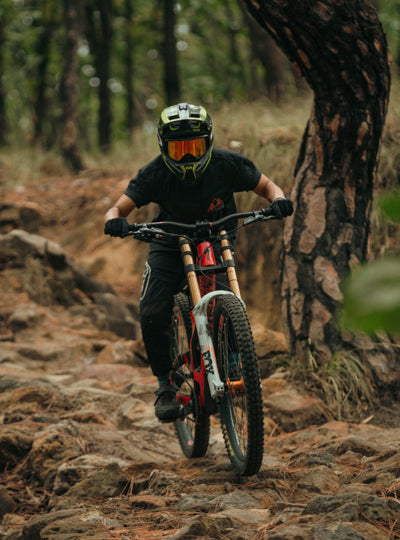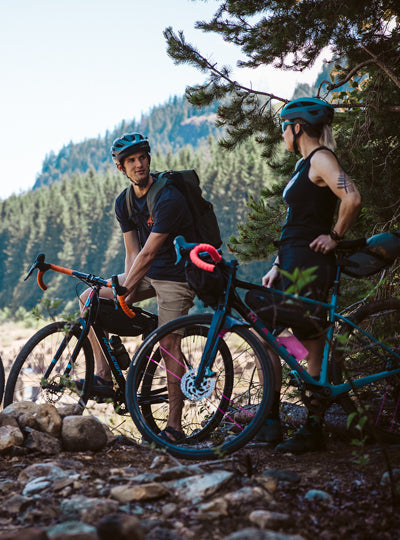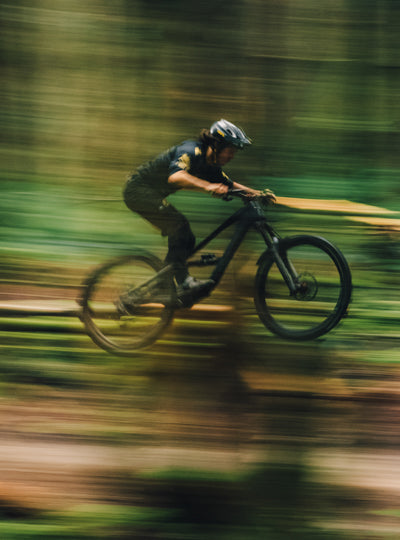WHAT MAKES THE LOAM CARBON BAR SO SPECIAL?
We have been receiving requests for a carbon handlebar for many years now, but we wanted to wait until we had a truly unique concept for how we could utilize carbon to deliver something that could transform and improve the rider's experience on the trail. After trail and lab testing our competitor's bars, our team collectively agreed that there was room for improvement. From there we put our heads together to dream up what the ultimate carbon handlebar would be like.
Carbon is an awesome material because it allows you to optimize for certain characteristics, far beyond what you can do with a material like alloy. In our eyes, carbon fiber is an amazing material to use for a handlebar because we can control the inner shaping and layup to make a really comfy riding bar that focuses on vibration damping while still maintaining predictable handling.
PNW CARBON FIBER
PNW uses pre-preg UD carbon fiber for the construction of the Loam handlebar. Pre-preg carbon is carbon fiber that has been pre-impregnated with a polymer resin prior to layup. You’ll see this type of carbon fiber used in manufacturing high-performance components for things such as race cars or rocket ships. Pre-preg carbon is known for its high strength, stiffness, and durability. The top-tier carbon manufacturer we partnered with weaves their carbon fiber in-house on an as-needed basis, allowing us to choose the highest quality prepreg UD carbon on the market. Our factory keeps these sheets refrigerated in a climate-controlled environment until they’re ready to enter the production line, a rare process in many carbon factories.
RIDE TESTING AKA THE FUN PART
Our team tested six of the top-ranked bars on the market using a blind test method. After rotating them around the team, we each jotted down our notes and installed the next bar onto our bikes. The feedback was pretty unanimous. Some bars were too stiff and harsh over chatter, while others were comfortable but unpredictable in corners. Some were as heavy as an alloy bar, others so light that they felt scary to ride with confidence.
Our engineering team used a proprietary deflection testing method to validate what we were feeling about our competitors' bars. The data agreed with how stiff or flexy a bar felt based on the correlating horizontal & vertical deflection. We were then able to use FEA analysis to begin designing our ideal handling carbon handlebar. The goal was vertical compliance to smooth out the chattery bumps, horizontal stiffness for predictable handling, and optimized layup to save weight. From there our patent pending CBD Layup was born.
PNW PATENT PENDING CBD LAYUP
In PNW speak CBD stands for Compliant Bore Design. This refers to the unique inside shape, layup, and wall thickness of the Loam Carbon Bar. By utilizing EPS molding and FEA Analysis we were able to design a unique bore shape with a consistent inner texture which allowed us to optimize the wall thickness. This unique and smooth shape is what makes up our CBD Layup. With our CBD Layup the Loam Carbon Handlebar has the benefit of shock absorption through vertical compliance while offering added horizontal stiffness and a consistent ride feel. We accomplished what we set out to achieve and we are so stoked to introduce the Loam Carbon Bar.
The Loam Carbon Handlebar is the first product in the PNW Components line to use our patent pending CBD Layup. Be on the lookout for future uses of this unique and data-backed tech in the PNW line, so stay tuned!
A TEST ABOVE THE REST
The Loam Carbon Bar is rated strong enough for e-bikes and DH riding. Our third-party test lab certified the Loam Carbon Handlebar as passing the most stringent global testing standard for bicycle equipment; EFBE’s Tri-Test® for MTB Gravity Category 5 – making the Loam burly enough even for e-bikes and downhill riding.
Here's a word from our product team on the testing process:
"The reality is, you don't have to test your handlebar in a lab. If you don't want to, there's no legal entity that says your bar has to pass certain testing. The industry standard is called ISO 4210. If you happen to have a break in the field then you have to be able to show that certificate, but there's nothing stopping any company from just making handlebars that they don't want to test. So we could have at minimum, just used the ISO 4210 testing. This can be done either by a third party, or even at the factory we can do that level of testing. So we did that to our ride test bars - just so that we didn't lose any teeth in the process.
"But for actual production, we decided to go above and beyond that. Our third-party lab EFBE has multiple grades of testing. From Category 1 up to Category 5 and it's all based on the riding intended, ride usage, and load cases. So our bar is tested to DH Standards and Ebike Trail Standards, which is the heaviest that they do right now. On top of all that, because Joey is such a damn good engineer, the bar still really light!""
-Todd Ford, PNW Director of Product
STILL HERE? WE HAVE SOME VIEDOS FOR YOU...
HOW TO INSTALL LOAM CARBON BAR
Step-by-step instructions for setting up your Loam Carbon Bar.
HOW TO TRIM THE LOAM CARBON BAR
Curious how to properly trim down your Loam Bar?
- SPECS
- GLOSSARY OF TERMS
Sizes:
- 800mm width, 35mm Clamp Diameter, 38mm rise, 233g
- 800mm width, 35mm Clamp Diameter, 25mm rise, 233g
Geometry:
- Upsweep: 5°
- Backsweep: 10°
Strength Rating:
- Rated strong enough for e-bikes and DH riding.
- Our 3rd party test lab certified the Loam Carbon Handlebar as passing the most stringent global testing standard for bicycle equipment; EFBE’s Tri-Test® for MTB Gravity Category 5 – making the Loam burly enough even for e-bikes and downhill riding.
Torque Spec:
- Max Stem Clamp Width: 70mm
- Max Stem Clamp Torque: 8Nm
- Max Lever Clamp Torque: 6nm
- Minimum Trim Width: 740mm
Note: Review the stem manufacturer’s installation manual for stem torque specifications. Refer to each of the manufacturer’s torque specifications for each cockpit item.
Colors:
- The Loam Carbon Handlebar has a matte black finish with satin PNW branding.
- Decals are available in 9 of our swanky colors: Safety Orange, Black Out Black, Moss Green, Moto Green, Pacific Blue, Fruit Snacks, Really Red, Seafoam Teal, and Peanut Butter. Sold separately for $5 ($USD)
- Horizontal Stiffness (Compliance): The amount of flex on an object that occurs along the horizontal axis. I.e.: The forward and back movement felt on a handlebar while riding, such as diving into a corner or under heavy braking.
- Vertical Compliance: The amount of flex on an object that occurs along the vertical axis. I.e.: The up and down movement felt on a handlebar while riding.
- FEA Analysis: Finite element analysis (FEA) is a computerized method for predicting how a product reacts to real-world forces, vibration, heat, fluid flow, and other physical effects. Finite element analysis shows whether a product will break, wear out, or work the way it was designed.
- EFBE’s Tri-Test®: The TRI-TEST® is EFBE’s proprietary development, which goes way beyond the established national and international standards and reflects the specific challenges faced by modern bikes. With its three modules – fatigue tests, maximum load tests, and overload tests – in various load cases, it provides a time-lapse simulation of the stresses throughout a bike component's entire life. Learn more here.
- CBD Layup: PNW Components patent-pending design, CBD Layup stands for Compliant Bore Design. This refers to the unique inside shape, texture, and wall thickness of the Loam Carbon Handlebar.
- Pre-preg Carbon Fiber: Pre-preg carbon is carbon fiber that has been pre-impregnated with a polymer resin. You’ll see this type of carbon fiber used in the manufacturing of high-performance components such as race cars or rocket ships. Pre-preg carbon is known for its high strength, stiffness, and durability.
- UD Carbon Fiber: Unidirectional (UD) carbon fiber fabric features all fibers woven in a single, parallel direction. There are no gaps between fibers, and the fibers lay flat. This allows for the concentrated density of fibers and provides maximum longitudinal tensile potential. For comparison, this is 3 times the longitudinal tensile strength of structural steel at one-fifth of the weight density.
- EPS Molding: A mold that is structured around expanded polystyrene. EPS molding is the standard for creating carbon frames and forks for the most elite race bikes. We use EPS molding in the Loam Carbon Handlebar because it allows us to control the uniformity of the carbon fibers, thus making for a smooth inner texture and desired shape, while also increasing durability and creating consistency across the production line.
- Al Dente: Al dente in Italian means "to the tooth" and is typically the preferred and correct way to cook pasta. "To the tooth" means there should be a slight bite to the noodle. The pasta should not be hard but it should have a tiny amount of resistance when you bite into it.

